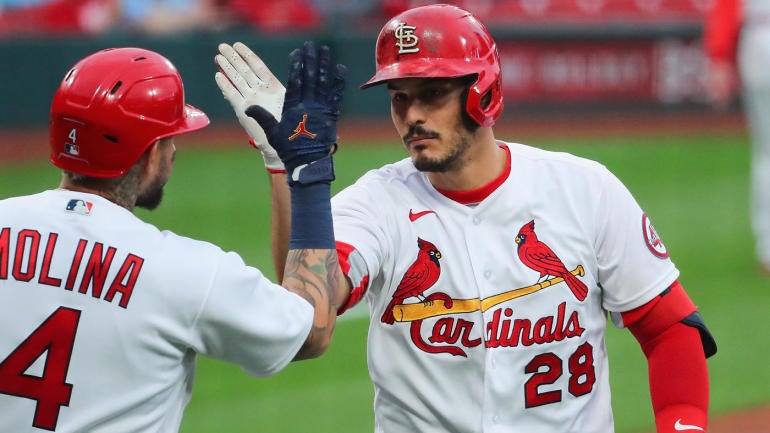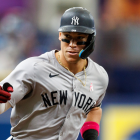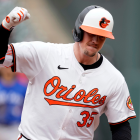
In the bottom of the first of Tuesday's game between the St. Louis Cardinals and Pittsburgh Pirates (PIT-STL GameTracker), Cards third baseman Nolan Arenado smashed his 10th homer of the season:
A perfect 10!
— St. Louis Cardinals (@Cardinals) May 19, 2021
(and the fourth game in a row) pic.twitter.com/Dm3nHGUqcS
That's 403 feet and 101.4 mph off the bat. As the caption says, Arenado has now homered in four straight games, which is the second longest streak of his career (he homered in six straight games in September of 2015). Arenado has been on another level in May, and as a partial consequence, he's enjoying an exceptional start to his first season in St. Louis. As of that home run above and an eight-pitch walk in the third, Arenado is now batting .304/.360/.584 with, as noted, 10 home runs and also 13 doubles.
The Cardinals of course acquired Arenado from the Colorado Rockies in February via a six-player blockbuster trade. While Arenado's stellar glove-work at the hot corner is unassailable, it wasn't hard to find those who wondered whether Arenado would struggle at the plate since he was no longer going to be playing his home games at a mile above sea level and in the most hitter-friendly ballpark in modern MLB history. Arenado, however, is but the latest reminder that good hitters remain good hitters even after leaving Coors Field.
Yes, Coors Field boosts a hitter's production at home, but because of the altitude effects, particularly on the breaking pitches they see, Rockies hitters often suffer a production-sapping "hangover" in road games. So while we wouldn't expect Arenado to put up Coors-grade numbers in Busch Stadium, we'd likewise expect him to fare better in road games as a member of the Cardinals. This has been the case with any number of genuinely skilled post-Coors hitters, including Matt Holliday and DJ LeMahieu.
As those updated numbers above suggest, Arenado has endured no drop-off whatsoever. In fact, he's on pace for his best season ever at the plate on a park-adjusted basis. He's also showing improved results at a more fundamental level. Consider:
- Arenado's maximum exit velocity of 110.6 mph is his highest such mark since 2016.
- His "sweet spot" percentage of 37.7 percent is a career-best.
- His hard-hit rate of 37.7 percent is his highest such mark since 2018.
- His strikeout percentage of 12.2 percent would be the best full-season mark of his career if it holds up, and it's also in the top 6.0 percent in all of MLB.
- His chase rate on pitches outside the zone is a career-best 27.2 percent.
You're seeing evidence of improved quality of contact -- notable given that shoulder woes dampened Arenado's outputs in the abbreviated 2020 season -- and a more disciplined approach at the plate. All of that bodes well moving forward, at least in the near- to mid-term. Yes, Arenado, now 30, will see his decline phase take hold at some point, but there's no indication of that yet.
There's also no indication that no longer playing his home games on Blake Street in Denver is exacting any kind of price. If anything, it's the opposite. While it's too early to take any player's home-road splits seriously, we'll nonetheless note that Arenado this season has an .866 OPS at home and a .956 OPS on the road. That plays into the time-tested notion that hitters who move on from the Rockies see improved fortunes in road games. We'll see if it holds up (spoiler: it probably will).
We already knew that a player of Arenado's caliber isn't a mere product of his home ballpark, and the 2021 season so far has reinforced that wisdom in an obvious way. It wouldn't at all be surprising if we look back upon the 2021 season as Arenado's best ever at the plate.






















